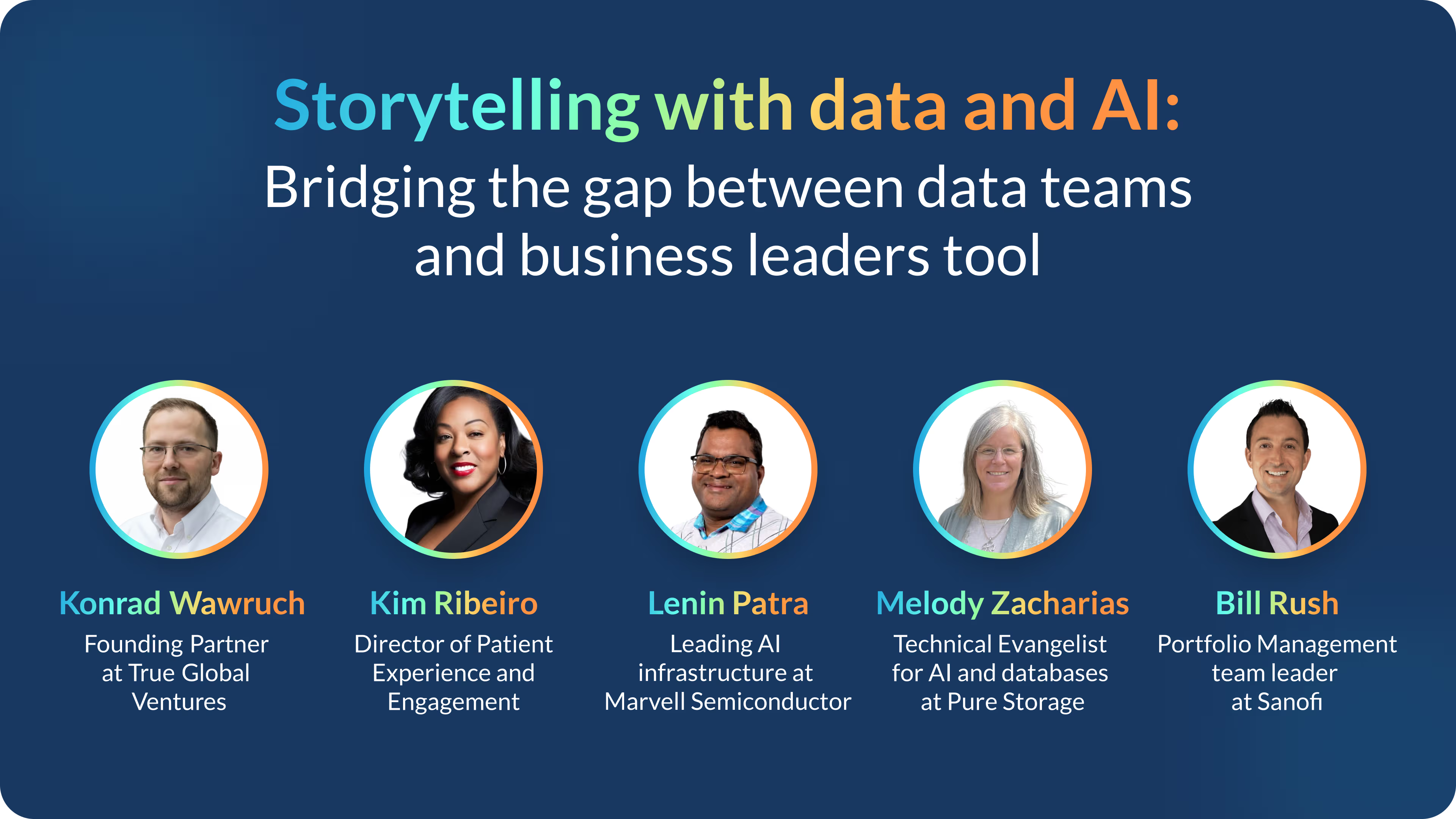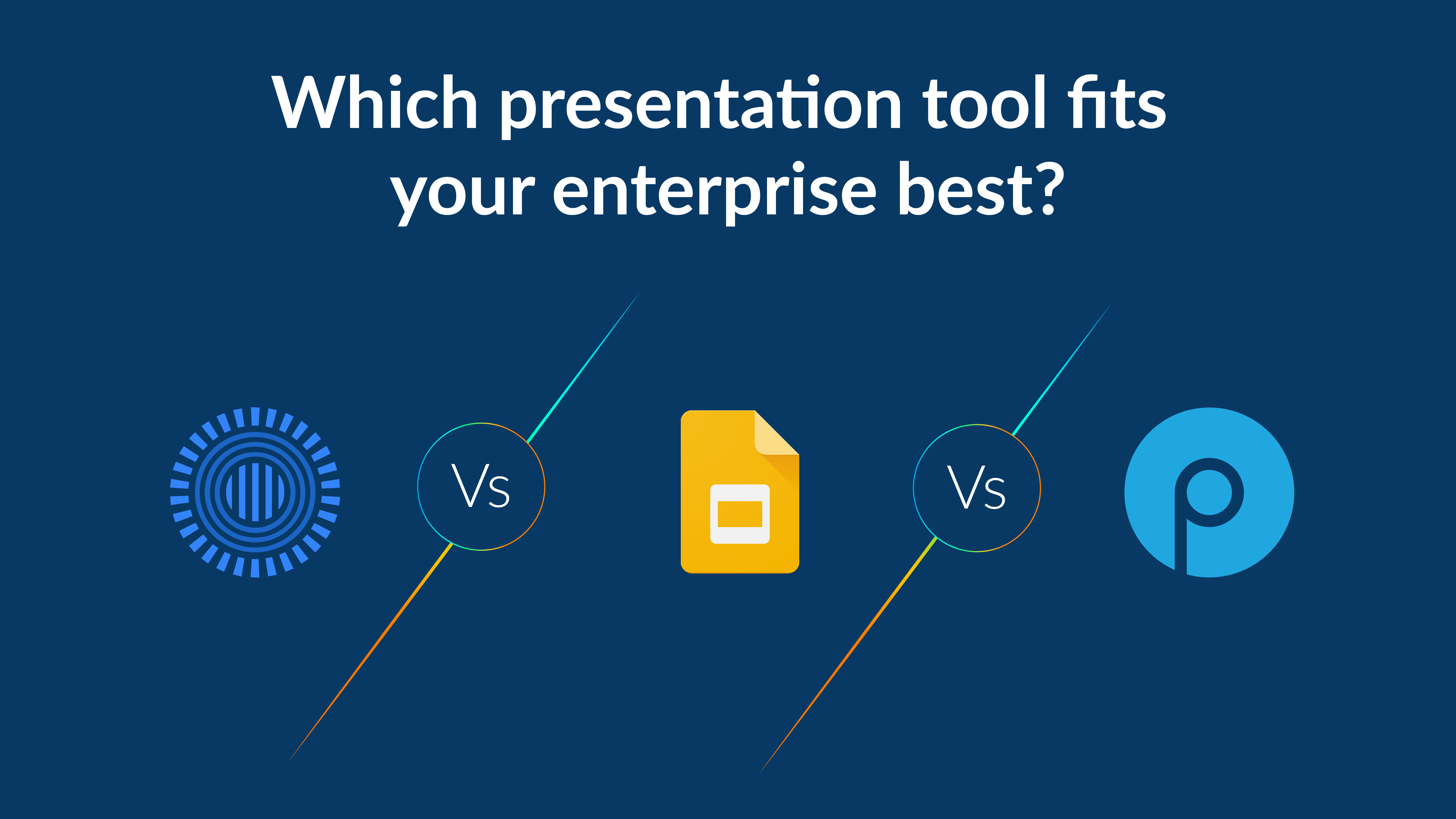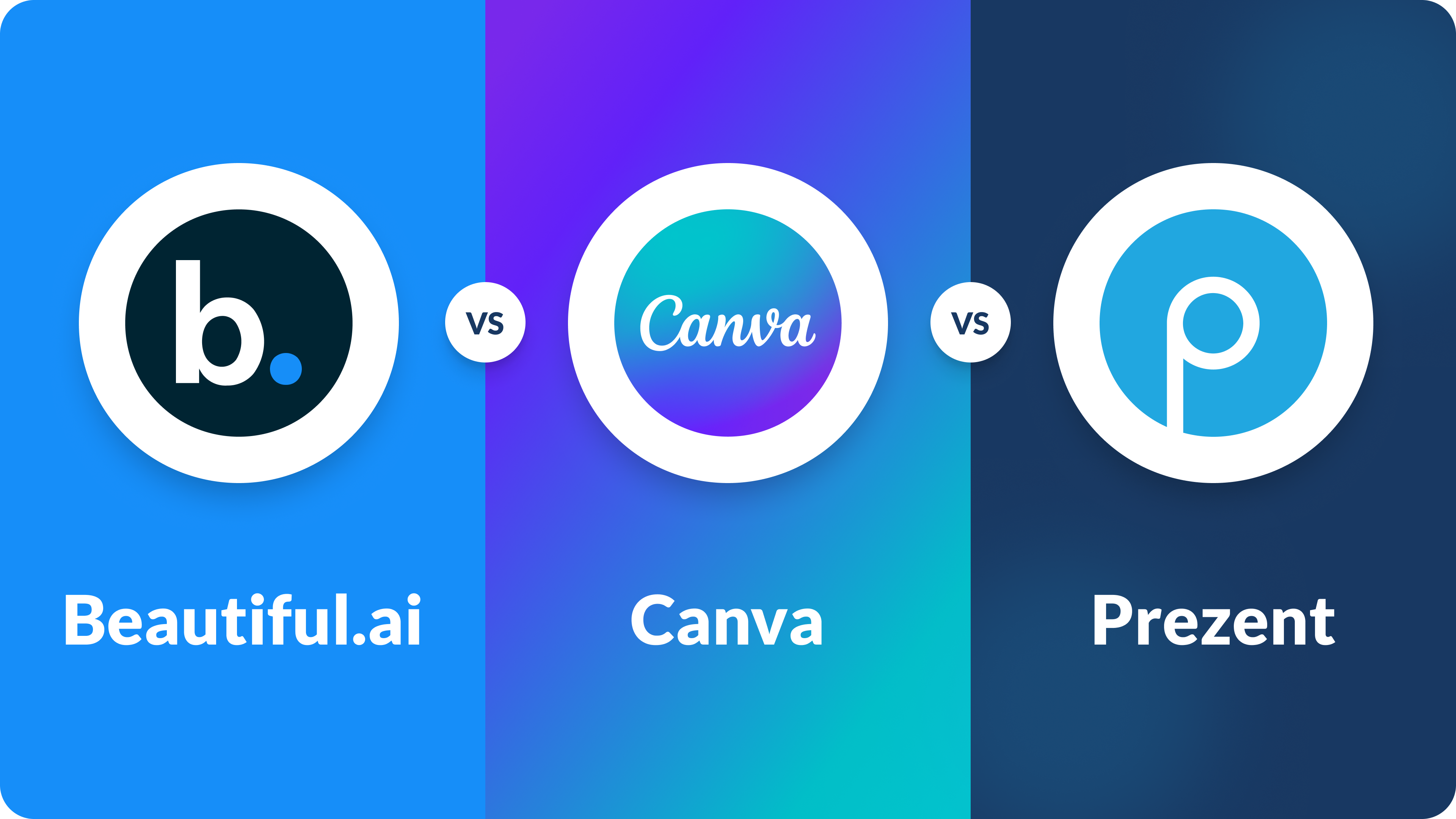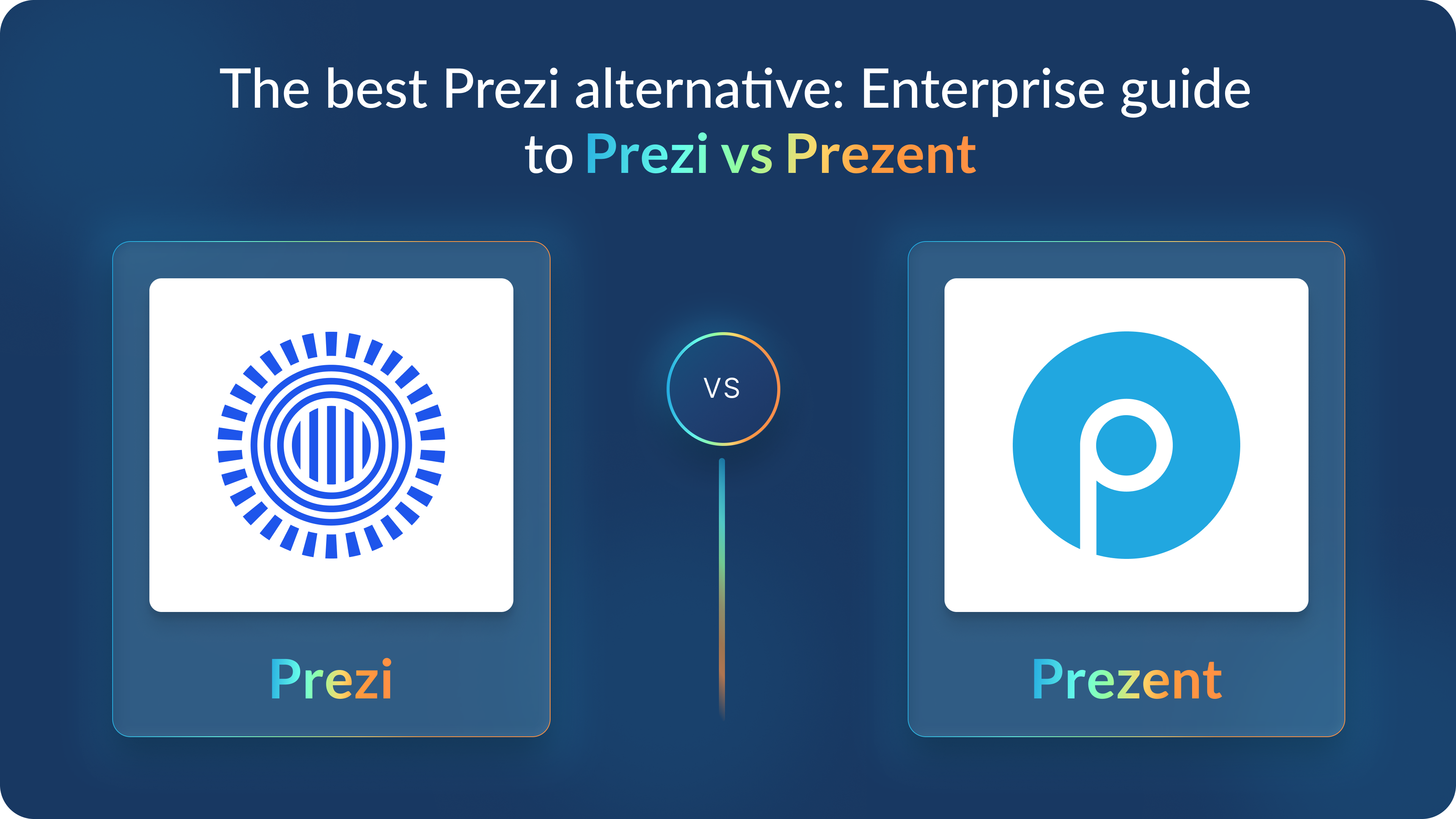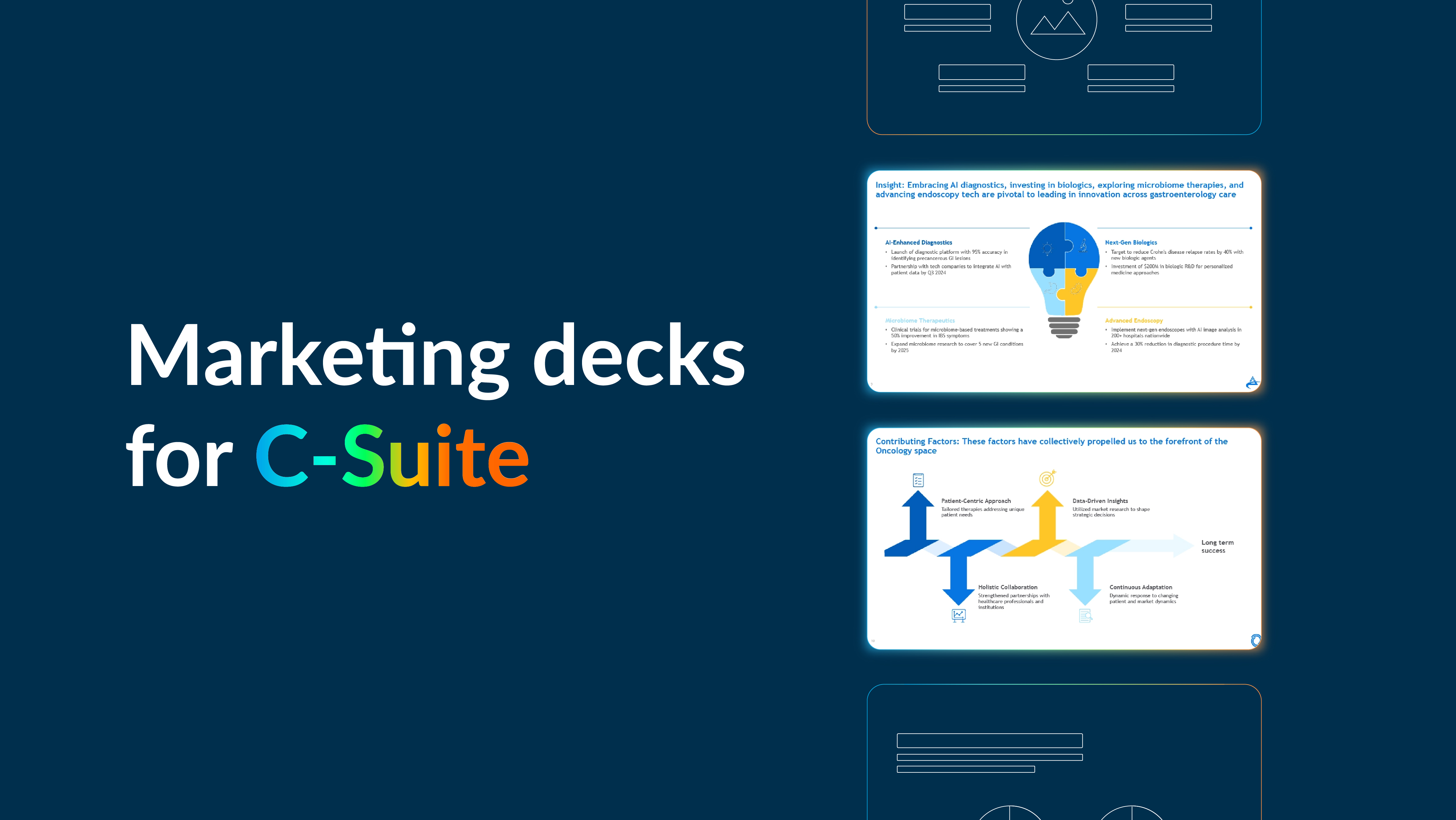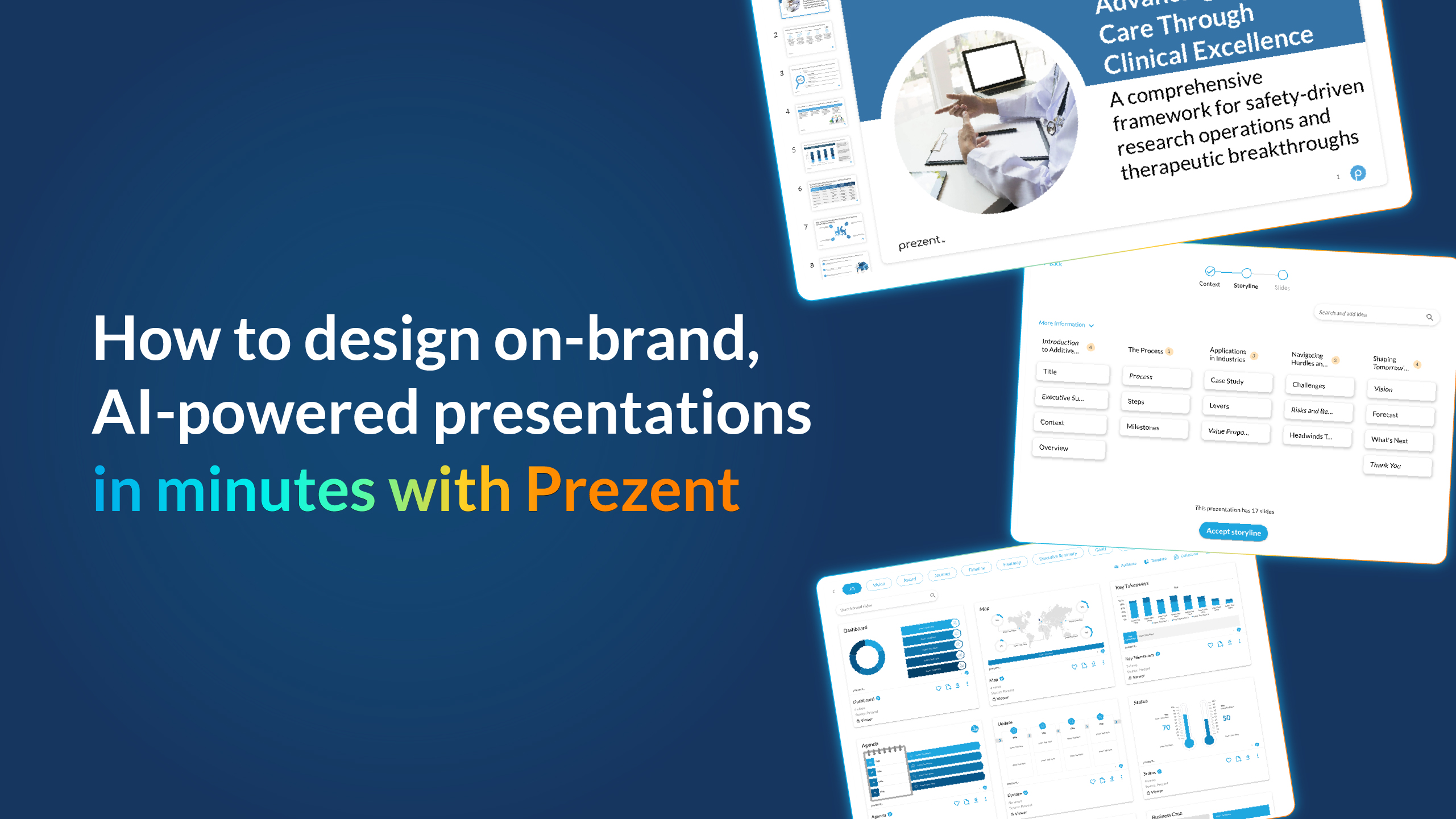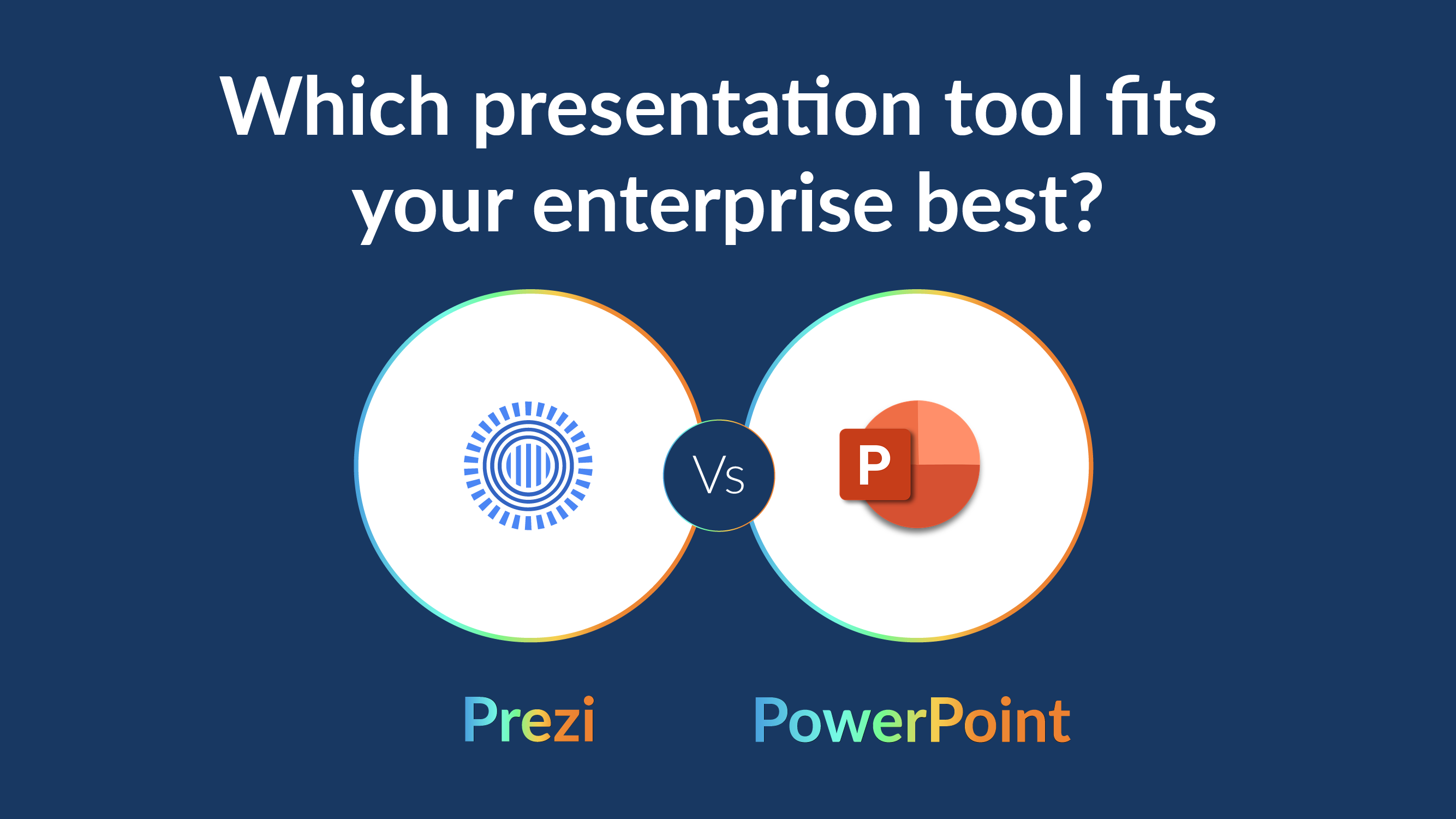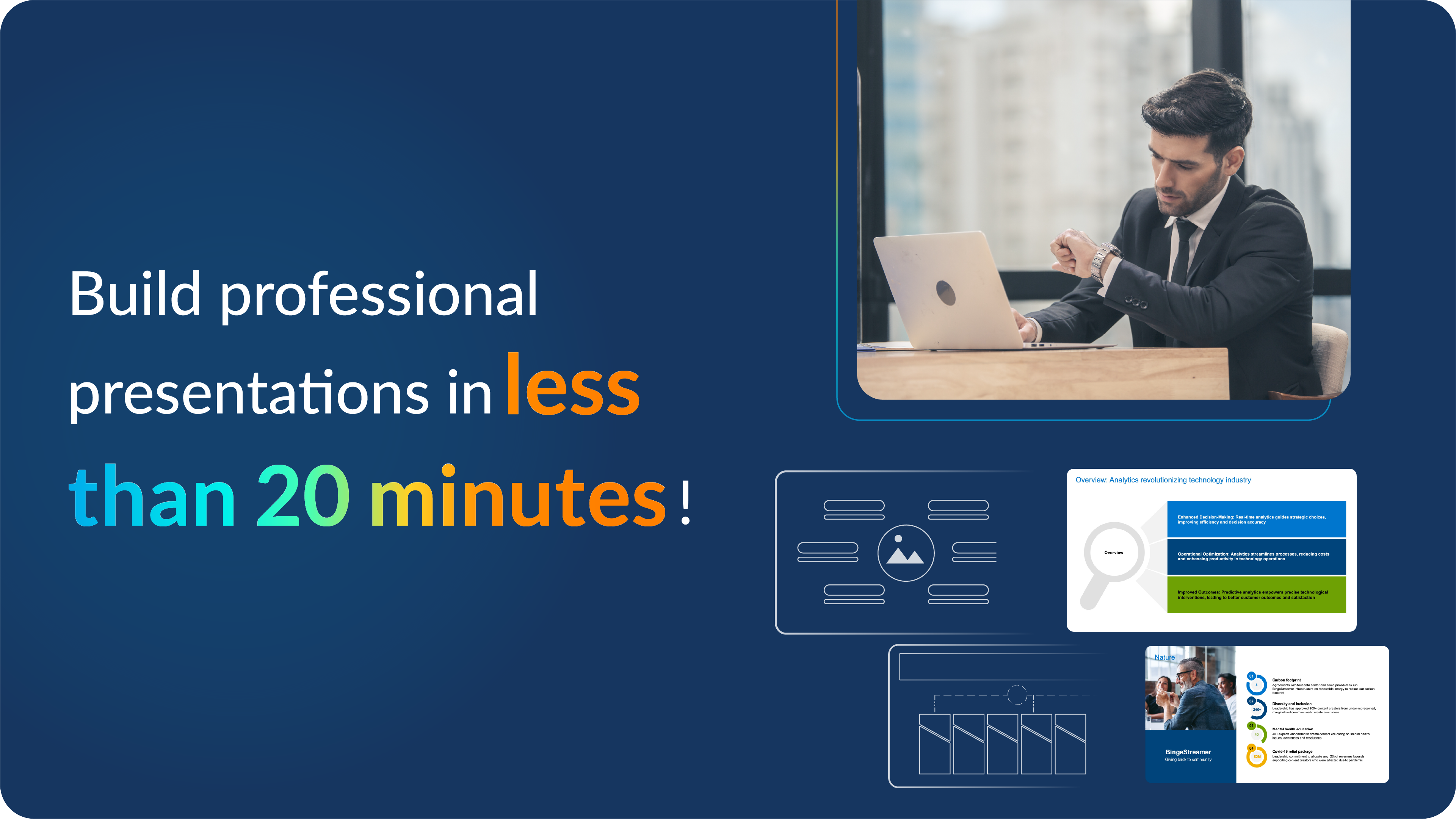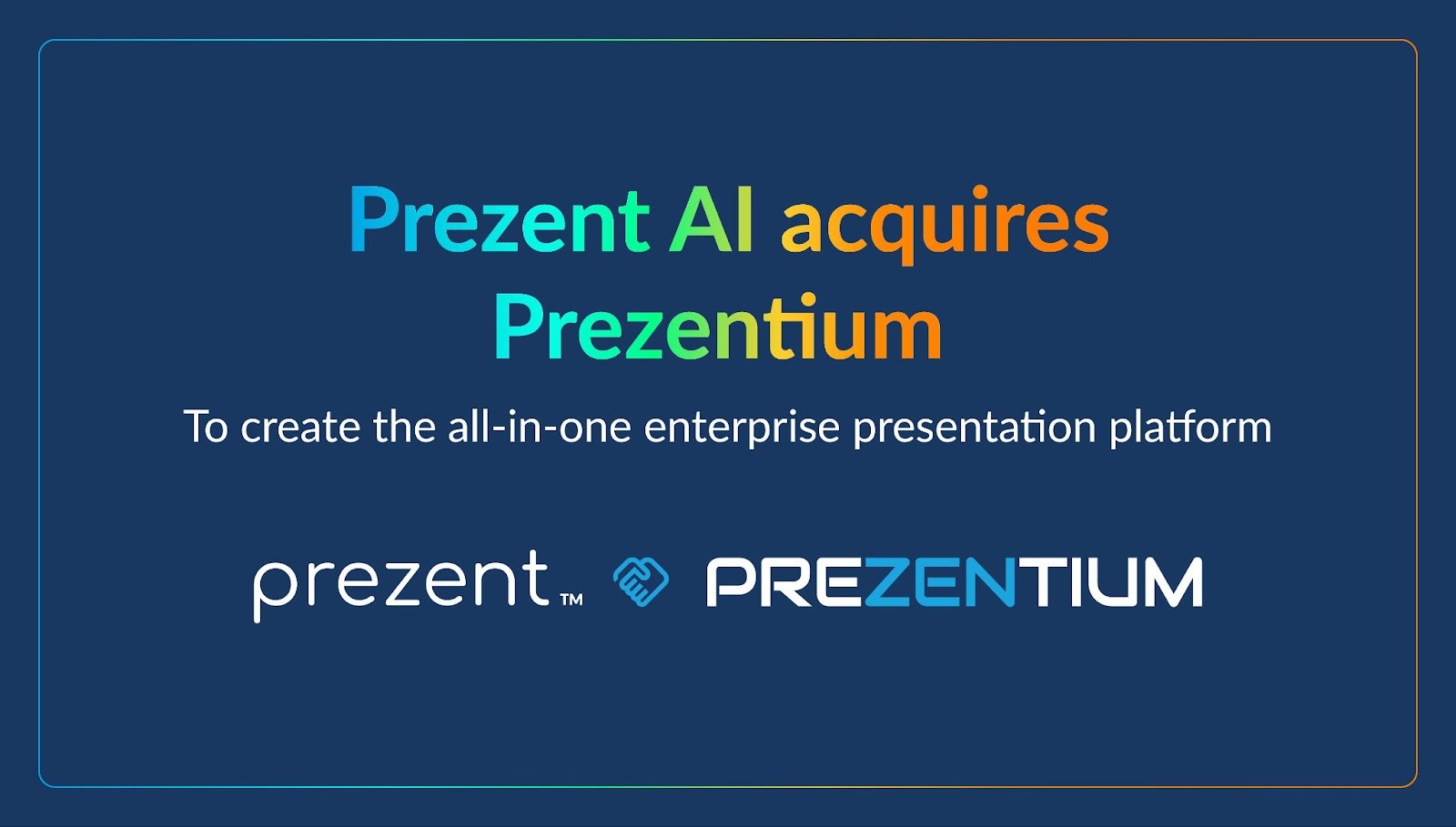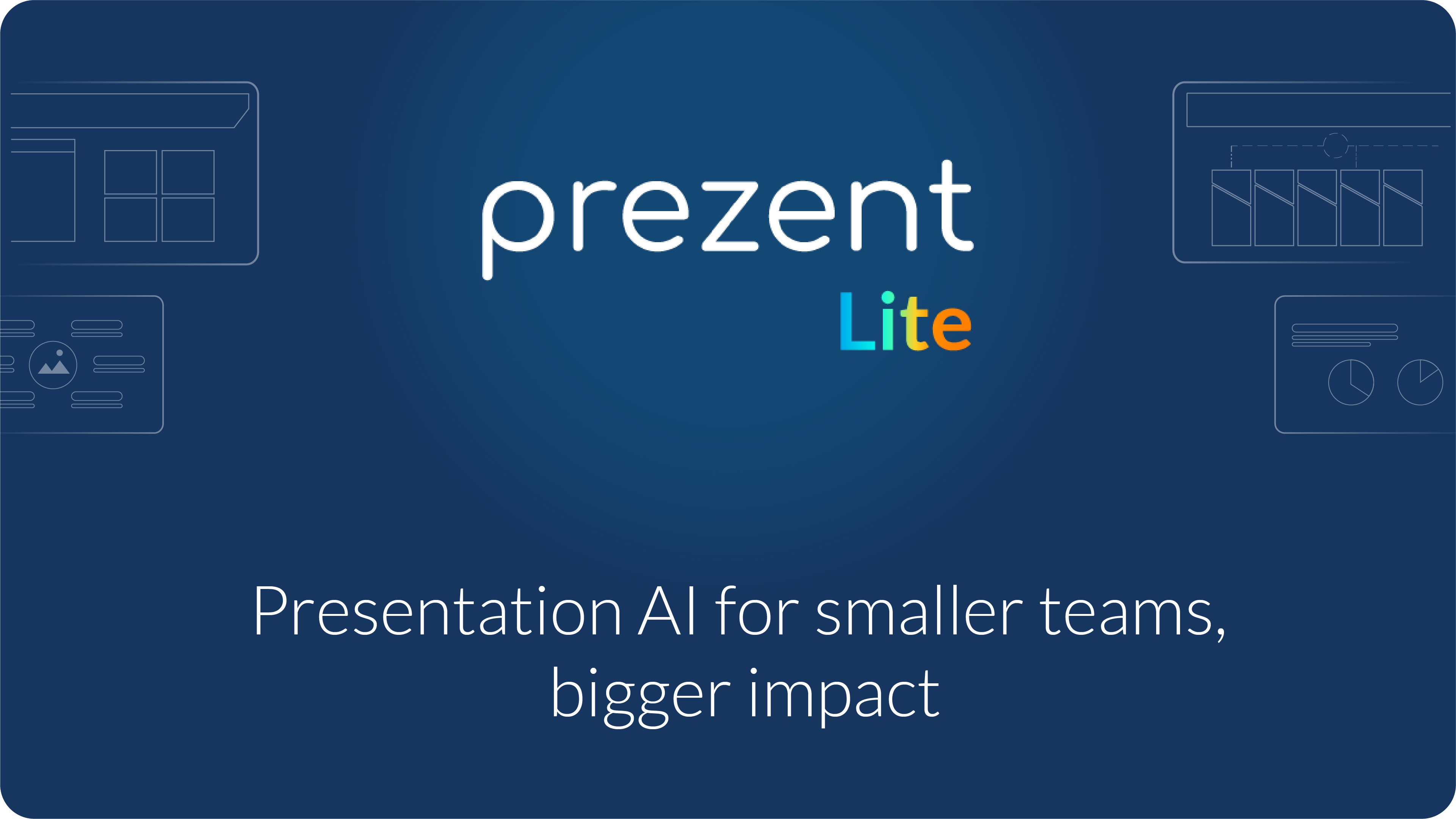How Contextual AI transforms business communication (and your presentations)
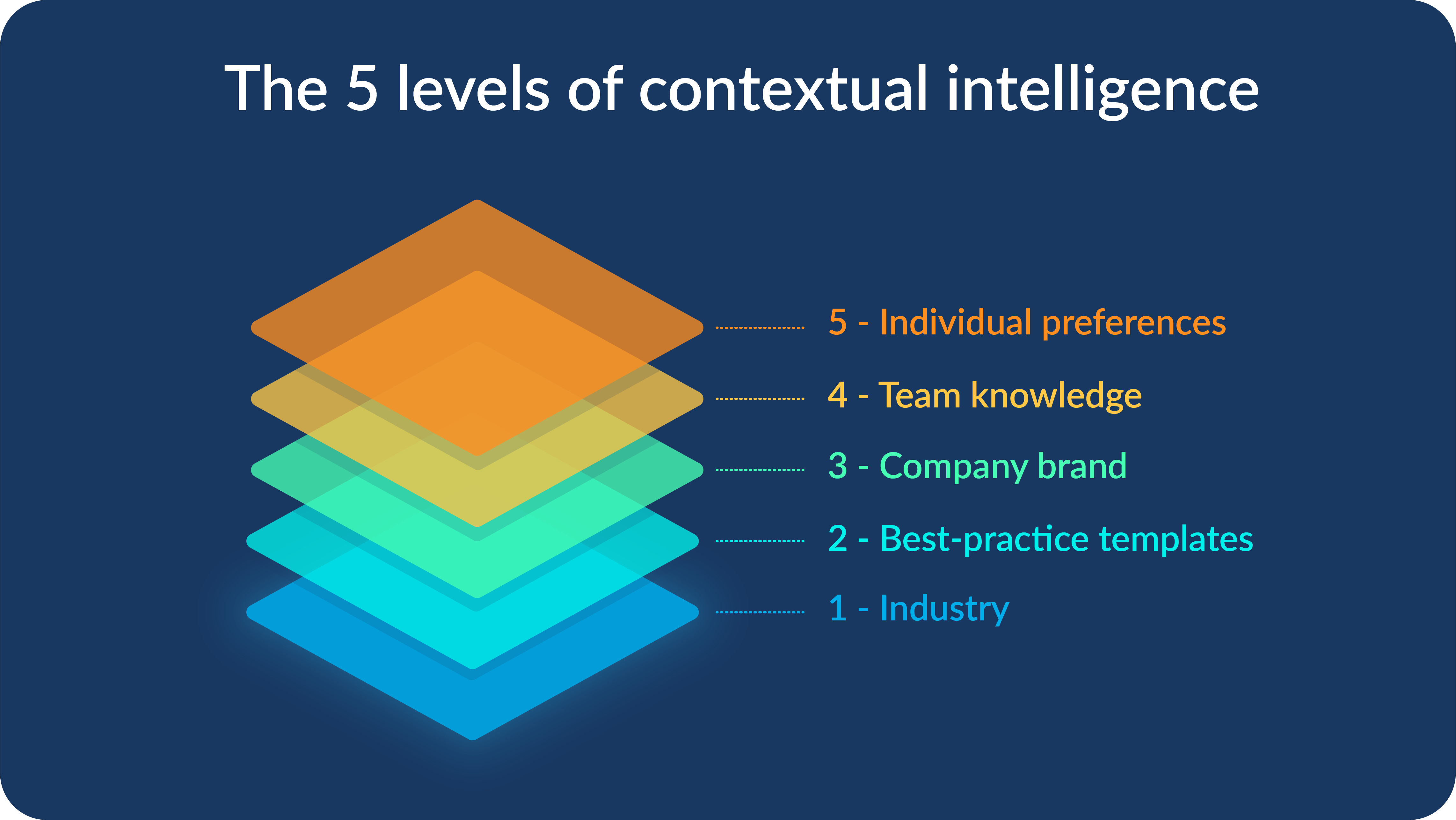
Have you ever typed something into ChatGPT, only to get a response so wildly off-base that you were left scratching your head, wondering how something with “intelligence” in the name could miss the mark so badly?
Yeah, same.
That’s because, despite the breakneck pace of AI innovation, most tools still lack one thing: true human essence.
Sure, we may one day face the ethical and philosophical dilemma of going brain-for-brain with the robots, but for now, AI can’t truly grasp the ins and outs of our lives, and it certainly doesn’t understand the why behind our prompts.
And people are noticing. In fact, 71% of respondents to Salesforce's State of Marketing report, believe that AI’s lack of human creativity and contextual knowledge may be a barrier to its successful use in the workplace.
That gap becomes even more troublesome in business communication, like when creating a presentation that relies on a high level of purpose, clarity, and audience awareness.
Traditional AI can’t wrap its wires around that kind of nuance. But do you know what can? Contextual artificial intelligence (AI) and Prezent’s AI agent, Astrid.
Understanding the difference between generative and contextual AI
Let’s be clear: not all AI is created equal, nor should the term be used as a catch-all for every tool that uses some form of AI, algorithms, or automation.
But, for the sake of painting a clear picture, let’s focus on two categories: generative AI and contextual AI.
- Generative AI: Tools like ChatGPT and Bard that generate text, images, or other content using large language models (LLMs) trained on vast datasets. These models create content based on patterns in the data they’ve learned, without specific knowledge of your unique context unless it's provided during use.
- Contextual AI: AI systems designed to incorporate specific information about your environment—like your industry, company, brand voice, and audience—to generate outputs (e.g., presentations, messages) that are more personalized and relevant to your setting.
“Contextual AI is more cohesive, professional, and fully aligned with your brand,” explains Bithika Jain, Director of Machine Learning at Prezent. “What sets contextual AI—and Prezent’s AI agent, Astrid, apart is that our AI uses five levels of context to help teams create impactful presentations in seconds.”
Here’s what those five levels include:

L1: Industry
Hallucinations occur when a model lacks sufficient context or relies too heavily on generic data. That’s why the first level of context needs to be grounded in industry awareness using Specialized Presentation Models (SPMs) designed to understand the unique lingo, standards, and norms that define industries like biopharma and technology.
“At this level, the AI tailors the presentation based on someone’s industry,” explains Bithika. “For example, if someone’s creating a presentation for the biopharma industry, the slides the AI will generate will look and sound very different from those created for someone in, say, tech or finance.”
In other words, this first foundational layer is all about making the overarching narrative feel familiar and relevant to whoever is on the other side of the room or screen. At Prezent, we’re able to deliver this relevance through our depth of experience and expertise in working with 40 of the top 50 global biopharma companies.
L2: Layout
We’ve all sat through presentations where the presenter took “just put it in a slide” words to heart, and ended up with walls of text, no visuals, and even less structure.
But effective presentations aren’t just about what you say. Equally important, if not more so, are the visuals, structure, and layout used to support them.
“To support this, we've curated a library of over 2 million slides that give us insight into slide layout patterns that follow industry, function, and team best practices to deliver a story in an engaging way for a given audience,” says Bithika.
For example, if a biopharma researcher is presenting clinical trial results, the slides generated might include a Kaplan-Meier curve to show survival outcomes. Meanwhile, a VP of Finance presenting quarterly earnings might see their data visualized with bar charts and other formats more familiar to financial audiences.
L3: Brand and voice
If it seems like more B2B brands are doubling down on brand building, it’s because they are—and for good reason. According to BCG, companies with strong branding show a 74% higher return on their brand marketing investment and hold a 46% larger market share than weaker brands.
It should go without saying, then, that key brand elements, including fonts, color palettes, and brand voice, should be front and center so your slides don’t just sound like you, but look like you, too.
And that’s why brand is the third level of context.
The contextual AI even adapts to subtle brand nuances between teams. For example, the Marketing team might have certain style preferences for branding that differ from the Product team’s preferred approach. Contextual AI can help adapt communication assets to reflect these style preferences for each team-specific use case.
L4: Team
The team level is where your team’s unique way of working starts to shape the output. "At this stage,” shares Bithika, “Prezent features like My Workspace allow teams to upload documents—just like they would to Google Drive—that the AI can pull from to personalize presentations.”
By feeding in team‑specific decks, internal playbooks, or research documents, you give the AI the context it needs to mirror your team’s language, style, and storytelling approach. For example, maybe your marketing team uses a set of acronyms and a playful tone, while your engineering team leans on technical terms and structured data
By carefully choosing content that the AI can reference—such as team-specific branding examples and customer research documents—businesses can supply Prezent’s platform with the right context to create content that is fully aligned with your brand and your intended use case.
At the same time, Astrid also references a growing library of nearly 300 pre-built storylines designed around different use cases, teams, and industries.
But the magic happens when these two elements come together—your team’s owned content and our narrative intelligence.
L5: Individual preference
Any type of business communication needs to align with the company, message, and audience, but it also needs to be relevant to your audience.
That’s where Communication Fingerprints come into play. Fingerprints are custom user profiles built from user inputs like preferred tone, phrasing, go-to slide style, and tone. Think of Fingerprints as a kind of Myers-Briggs personality test for individuals at your company, ensuring that your presentations are aligned with the preferences of your audience.
“Fingerprints can personalize communications in a way that's empathetic to the audience,” explains Rajat Mishra, Founder & CEO at Prezent. For example, different roles require different approaches. A data scientist might need slides filled with data and analytics, while a VP of Sales may prefer a concise summary that gets straight to the bottom line. With Fingerprints, you are tailor your presentation to their preferences with a single click.
You can learn more about the levels of contextual intelligence and how our models are trained here.
The business impact of Prezent and contextual AI
At its core, contextual AI helps teams move faster, communicate more clearly, and convey ideas, proposals, and more that actually land with the audience, whether that’s internal or external.
But the impact goes beyond that.
Productivity
Creating any slide deck presentation is a labor of love that often involves researching, developing content, aligning with cross-functional teams, and chasing down that one person in your organization who knows how to bring slides to life. And all of this is happening on top of your already-packed schedule.
Contextual AI eliminates much of this friction by embedding the most critical context upfront and enabling your team to build presentations in minutes, not hours, so they can spend time on higher-impact tasks, such as strategy.
That’s exactly what Gina Whitehead, Chief of Staff at a leading insurance company, experienced with Prezent. “Prezent and all of the magic that the platform can do is the wave of the future,” she says. “Let's be more efficient and use the products and the services and the tools to make our jobs easier so that we can move on to bigger and better things and more successes in our roles.”
Consistency
Ask three different teams to send you the onboarding deck they use to ramp up new hires. We bet you’ll spot at least one or two inconsistencies.
Prezent solves this with SPMs, structured storylines, and predefined branding guardrails to ensure communications are consistent, regardless of who prepares a deck. Our models use both internal and external insights to capture the most context possible, which improves consistency in the end product.
Agility
Industries change. Buyer expectations shift. What landed with your audience last quarter might not have the same impact today. Your AI tools need to keep pace.
Contextual AI can provide real-time internal and external insights, allowing models to adapt to changing language and expectations. This added context keeps your presentations aligned with the shifting needs of your market, company, and audience.
Applying contextual AI across your company
Tech stacks and processes may be different across teams, but there’s one universal constant: At some point, everyone builds presentations.
That’s why contextual AI—and specifically, Astrid—isn't just built for one function, use case, and department; it’s designed for everyone.
Here are three examples:
Sales leaders
Speed, relevance, and precision are the name of the game in Sales, and often the difference between closing deals, onboarding new customers, and standing out in growing markets.
Whether a Sales leader is pitching prospects, onboarding new hires, or equipping the team with new training, Astrid makes it easy to build or refresh decks that aren’t just engaging but also tailored to specific audiences, industries, and contexts.
The result? Sales teams spend less time creating slides and more time, well, selling.
Chiefs of Staff
Ask any Chief of Staff to describe their role, and you’ll likely hear words like hectic, high-stakes, and always changing. Plus, they sit closer to executives than almost everyone, which puts a premium on clarity, consistency, and precision.
That’s where Astrid steps in. With contextual AI, Chiefs of Staff can more quickly ensure every deck is clear, consistent, and aligned with how executives want to communicate.
Plus, because we’ve built Astrid with enterprise-grade security in mind, sensitive materials stay protected.
Communications Director
Comms teams are often the stewards of brand voice and tone. They’re also often the connective tissue that keeps internal and external stakeholders aligned. That’s already a tall order, but it’s particularly difficult given the shrinking budgets and headcount put even more weight and responsibility on their shoulders.
Astrid elevates a lot of that presentation-related pressure by templatizing existing product decks and using that as a foundational blueprint across the company. Astrid also evaluates the new deck, suggests areas for improvement, and replaces non-compliant images with their approved alternatives. The result? Polished, on-brand presentations that scale across the company.
Context: The missing piece in AI and business communication
We’ve all had that moment in the last few years where we’ve said something along the lines of, “Did a robot write this?”
Chances are, the answer is yes. With three out of five workers (61%) currently using or planning to use generative AI, it’s no surprise that AI-generated content is out there.
While there’s nothing wrong with using AI tools in the workplace, as long as you do so responsibly, the problem lies with how you use these tools. Most generative AI models are powerful—and only getting better—but they currently lack the context needed to build a presentation that’s engaging and resonates with the audience.
Prezent’s Contextual AI is changing that and empowering everyone to be able to communicate their business stories more impactfully.
Want to explore how Prezent can help you create more relevant presentations, faster? Schedule a demo today.


